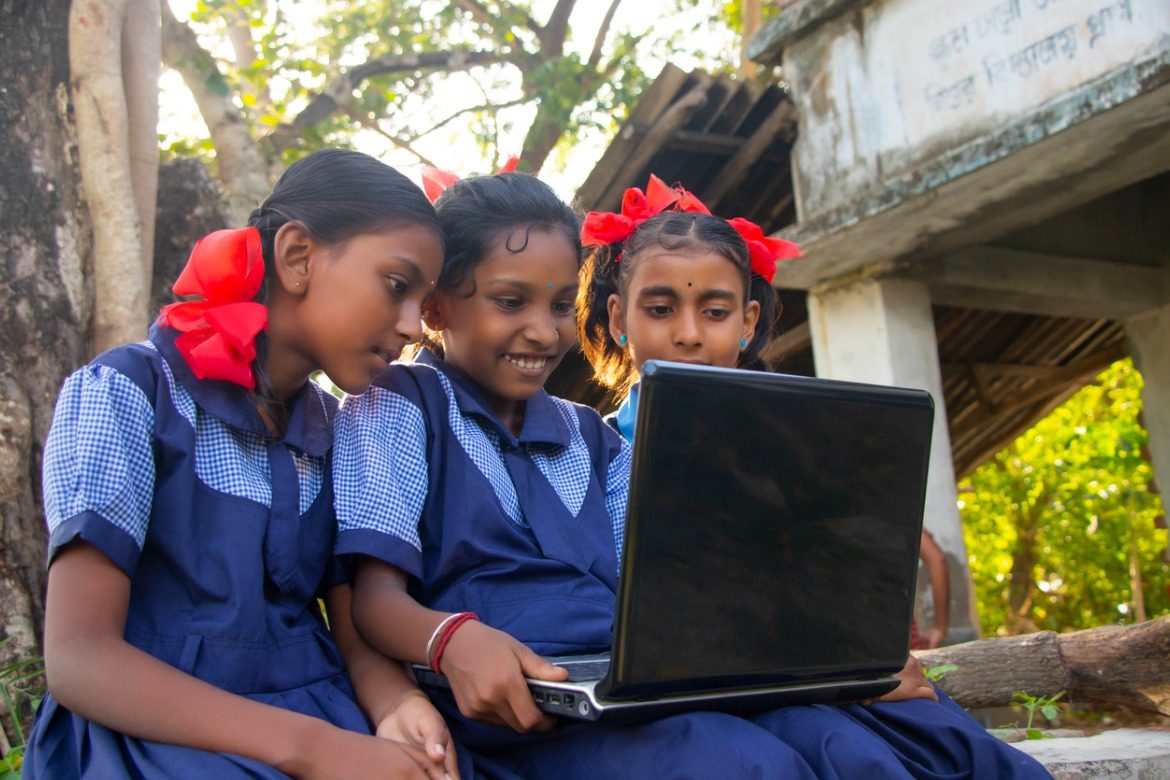- The Indian government has invested heavily in the digitisation of education. The aim is to bring internet penetration above 55% by the end of 2025.
- The government is making use of the Digital Infrastructure for School Education (DIKSHA) app. This app enables teachers to access the latest digital technologies in EdTech and makes the learning curve easier for them to teach their students seamlessly.
- The pandemic has further highlighted the divide and structural imbalances between the rich and poor, male and female, and urban and rural demographics in the digital space. With the already existing digital divide, the online education system may end up pushing those without access to the periphery of the education system and producing substantial inequities.
The pandemic has shut down classrooms worldwide. This has highlighted the importance of digital technologies in educational technology (EdTech) and is steadily making learning less location dependent. Virtual education is not a distant reality anymore and is now being practiced across all age and class spectrums. The COVID-19 pandemic E-learning methods are shaping the way for advancing methods and approaches in the EdTech sector.
The Indian government has invested heavily in the digitisation of education. The aim is to bring internet penetration above 55% by the end of 2025. Currently, only 8% of homes with members aged between five and 24 have both a computer and an internet connection. This problem gets exacerbated further by the fact that only 24% of Indian households have internet access. 66% of India’s population lives in villages; only a little over 15% of rural households have access to internet services. When it comes to urban India the number is 42%.
Let’s take a look at the challenges and opportunities associated with access to digital education.
India’s e-learning infrastructure
India’s Ministry of Human Resource Development budget allocated INR 469 crores to e-learning, a reduction from INR 604 crores. Further, different states across India have varying levels of internet penetration. Take the case of Bihar which has internet penetration of only 4.6% compared to 23.5% in Kerala and 35% in Delhi. The pandemic has further highlighted the divide and structural imbalances between the rich and poor, male and female, and urban and rural demographics in the digital space. With the already existing digital divide, the online education system may end up pushing those without access to the periphery of the education system and producing substantial inequities.
To ensure a comprehensive e-learning experience, there is a need for continuous and reliable internet connectivity. Service providers such as Vodafone, Jio, Airtel, and BSNL, have manoeuvered their way into this space by offering “Work From Home” data packs that provide additional data and other miscellaneous services to their users. The government has not clarified whether it will reimburse the students for the data costs incurred or whether they can avail of subsidised data packs. Therefore, the question remains – can students across various social spectrums afford these services or even access these services due to their location?
These service providers cannot assure steady connectivity. A report by Quacquarelli Symonds (QS) highlighted that out of 7,600 respondents surveyed, 3% faced cable cuts, 53% faced poor connectivity, 11.47% faced power issues, and 32% faced signal issues. Regarding the mobile hotspot, 40.18% faced poor connectivity, 3.19% faced power issues, and 56.63% faced signal issues.
Infrastructure to ensure that data penetration is achieved even in the hinterlands of India will be key to making sure that reliable e-learning is made available to all.
Quality of e-learning
In recent times, e-learning has been upgraded with augmented reality (AR) and Artificial Intelligence (AI), making it easier for pupils with learning difficulties or disabilities. However, there are significant cost implications for students to even avail of basic digital learning tools. Several teachers, too, have not had access to various e-learning methodologies and face a significant learning curve. Lack of digital literacy has a notable impact on the quality of classes given to students as they are trying to adapt to their new learning environment. In addition, learning needs a conducive environment which is at a premium in India. According to the 2011 census, 37% of households have one living room. It would thus be a luxury for many to be in an undisturbed environment.
Introduction of latest technologies and methodologies
EdTech has definitely addressed some of the issues such as inadequate student-teacher ratio, teacher shortages, and insufficient teaching resources. It is making considerable progress regarding interactive and AI-enabled tools that could not have been accessed otherwise. To facilitate the uptake of such tools, the government is making use of the Digital Infrastructure for School Education (DIKSHA) app. This app enables teachers to access the latest digital technologies in EdTech and makes the learning curve easier for them to teach their students seamlessly.
With exams also being conducted online, progress in the EdTech sector has streamlined the process for teachers when it comes to credible online assessment, reliable proctoring of the test taker, and automation of certain processes. The web-based systems in EdTech have many online benefits through time savings, cost reductions, security, and wider reach.
Since EdTech significantly reduces human intervention, operationalisation, coordination, and planning can be done more effectively. EdTech platforms can definitely support a wider geographical pool and ensure that the quality of education can be effectively upheld to a set standard. Robust and secure platforms with safety nets can also help invigilation, avoid impersonation, and prevent content leakage.
What’s next for this sector
EdTech’s greatest promise is to widen access to education for everyone, no matter where they are in the world – something which has become an increasing priority during the pandemic. Entrepreneurs and innovators are collaborating with leading organisations via the World Economic Forum’s Uplink initiative – an open digital platform that aims to accelerate concrete progress in meeting the United Nations’ Sustainable Development Goals. If India takes advantage of this UN initiative, it will allow the nation to continuously innovate and also put itself in a feedback loop by learning from peers around the world.
Inevitably, digital education will further witness significant changes in the way institutions make provisions for learning. The pandemic has only accelerated the trend, and it won’t be a temporary arrangement. Learning technologies are expected to have long-term consequences and shape future generations. There are several opportunities for this sector to evolve, and if the government makes calculated decisions, digital education can impact the nation’s economy. It can help improve literacy rates, lead to poverty alleviation, and improve upon the existing development parameters.
India has many opportunities in the EdTech sector, but caution needs to be exercised to ensure that new learning methods do not create a bigger pool of have-nots, exacerbating deep socio-economic problems and bringing about more divide.






NO COMMENT